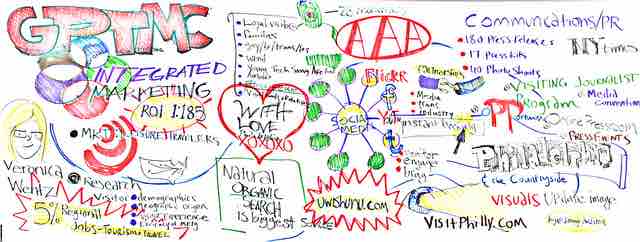Setting Goals
Integrated Marketing Communication (IMC) is an approach to brand communications where the different modes work together to create a seamless experience for the customer. Customers are presented with a similar tone and style that reinforce the brand's core message. The ultimate goal is to make all aspects of marketing communication--advertising, sales promotion, public relations, direct marketing, personal selling, online communications and social media--work together as a unified force, rather than in isolation. This synergy between different marketing elements maximizes their cost effectiveness .

Integrated Marketing
Integrated marketing communications can be used to develop brand awareness, increase consumer demand and change beliefs towards a product.
The cost effectiveness of mass media due to fragmentation has forced integrated marketing communications to the forefront of modern marketing. As consumers spend more time online and on mobile devices, the goal for marketing teams should be for all exposures of the brand to tie together so they are more likely to be remembered. Increasingly the strategies of brands cannot be understood by looking solely at their advertising. Instead they can be understood by seeing how all aspects of their communications ecosystem work together and in particular how communications are personalized for each customer and react in real time.
Common IMC Objectives
In addition to considering recent market, consumer and technological shifts, brands must assess their marketing budget and target audience when setting IMC goals. An IMC strategy with a budget of $2 million will be radically different in size, scope and reach than a marketing budget of only $2,000. Thus, smaller businesses with tiny IMC budgets may rely heavily on social media advertising and word-of-mouth networks to increase brand presence and generate new leads, rather than more expensive television and billboard advertising.
Despite varying budgets, product features and benefits, and consumer behaviors, organizations typically set and work towards the following goals when implementing IMC strategies:
- To develop brand awareness
- To increase consumer or business demand for a product category
- To change or influence customer beliefs or attitudes
- To enhance purchase actions
- To encourage repeat purchases
- To build customer traffic to physical stores, websites or other marketing channels
- To enhance firm/brand image
- To increase market share
- To increase sales
- To reinforce purchase decisions
IMC strategies may seek to achieve one, many or all of these objectives throughout the course of a campaign. Once strategies have been implemented, they are not changed unless major new events occur. Only changes in the marketplace, new competitive forces, or new promotional opportunities should cause companies to alter strategies and reassess IMC goals.